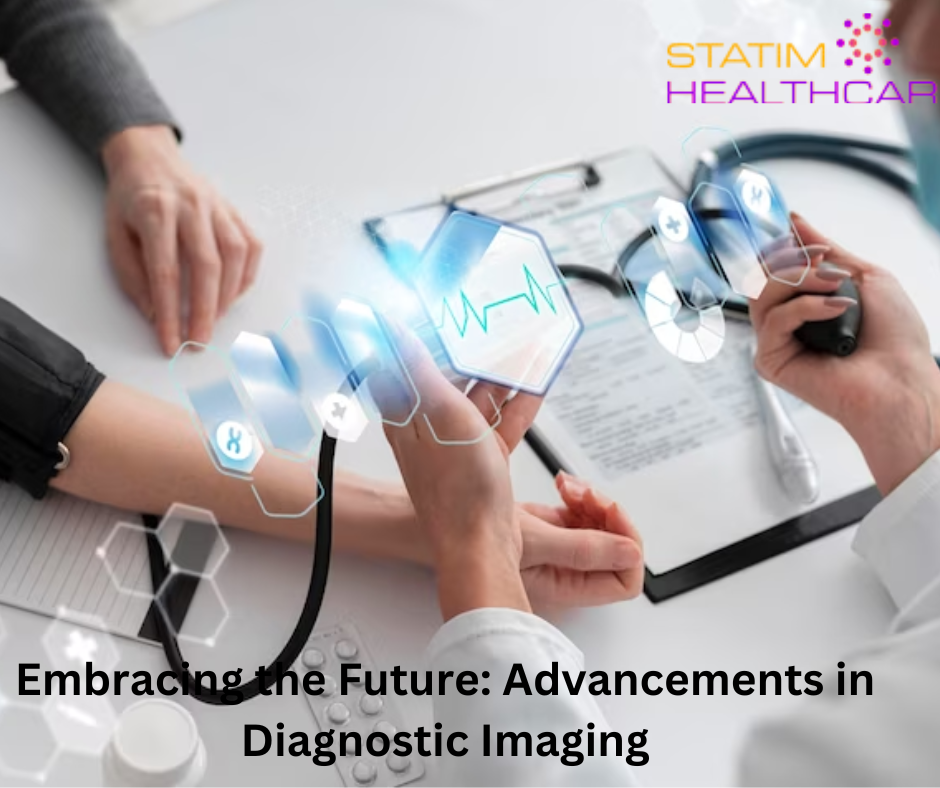In today’s rapidly evolving healthcare landscape, diagnostic imaging plays a pivotal role in accurate disease detection, treatment planning, and patient care. It enables healthcare professionals to visualize internal structures and identify abnormalities that may not be visible to the naked eye. As technology continues to advance, so does the field of medical diagnostic imaging, offering unprecedented opportunities to improve healthcare outcomes.
Traditional Diagnostic Imaging Techniques
Traditional diagnostic imaging modalities, such as X-ray, CT scan, MRI, and ultrasound, have been instrumental in diagnosing various conditions and guiding medical interventions. These modalities have their strengths, but they also come with limitations. X-rays provide quick imaging but lack detail, while CT scans and MRI offer detailed images but involve radiation exposure and can be time-consuming. Ultrasound is non-invasive but has limited imaging depth. These limitations necessitate advancements to overcome these challenges and enhance diagnostic capabilities.
Emerging Technologies in Diagnostic Imaging
The emergence of advanced technologies, including Artificial Intelligence (AI), Machine Learning, and Deep Learning, has revolutionized the field of USA medical imaging system. AI algorithms can analyze vast amounts of medical data and assist radiologists in detecting subtle abnormalities, predicting disease progression, and aiding in treatment planning. Machine Learning enables the development of predictive models for early disease detection, while Deep Learning algorithms improve image analysis and interpretation accuracy. These technologies are reshaping diagnostic imaging by augmenting human expertise, reducing errors, and unlocking new possibilities.
Benefits and Impact of Advanced Imaging Techniques
Advanced imaging techniques have brought about a paradigm shift in healthcare, offering a multitude of benefits and significantly impacting patient care and healthcare systems. Let’s explore the key advantages these technologies bring:
Enhanced Accuracy and Precision
Advanced imaging provides improved accuracy and precise diagnoses, aided by AI algorithms and machine learning. This reduces misinterpretation and enables timely interventions.
Early Disease Detection
These techniques facilitate early detection of diseases and conditions, leading to proactive management and higher chances of successful treatment outcomes.
Improved Patient Outcomes
Personalized treatment plans based on accurate diagnoses lead to better patient outcomes, as interventions are tailored to individual needs.
Reduced Healthcare Costs
Advanced imaging minimizes unnecessary procedures, optimizing resource utilization and reducing overall healthcare expenses.
Empowering Healthcare Professionals
With advanced tools and insights, radiologists and healthcare professionals make more informed decisions, improving efficiency and quality of care.
Advanced US medical imaging techniques bring enhanced accuracy, early detection, improved patient outcomes, cost savings, and empowerment for healthcare professionals. By embracing these advancements, we can elevate healthcare standards and deliver better care to patients.
Challenges and Ethical Considerations
Advanced imaging techniques come with challenges and ethical considerations that require attention:
Privacy and Security Concerns
Safeguarding patient data is crucial due to the extensive collection and storage involved in advanced imaging techniques. Robust data protection measures and compliance with privacy regulations are essential for maintaining patient confidentiality.
Training and Expertise
Healthcare professionals must receive proper training and expertise to effectively utilize advanced imaging technologies. Comprehensive education and ongoing professional development ensure accurate interpretation of imaging results and safe technology usage.
Impact on Employment and Workforce
Integration of advanced imaging technologies may impact the radiology workforce. Strategies such as reskilling and reassigning roles can address potential workforce changes and maximize the benefits of advanced imaging.
By addressing these challenges and ethical considerations, we can strike a balance between technological advancements and ethical responsibilities. Robust security measures, adequate training for healthcare professionals, and proactive management of workforce impacts are vital to fully leverage the potential of advanced imaging while upholding patient privacy and the well-being of healthcare professionals.
Future Trends and Predictions
The field of diagnostic imaging is advancing rapidly, bringing forth exciting developments for the future. Here’s a glimpse into what lies ahead:
Upcoming Advancements
Diagnostic imaging is set to embrace new frontiers with technologies like molecular imaging and hybrid imaging. These advancements promise improved disease visualization, enhanced diagnostic accuracy, and targeted treatment options.
Integration of AI and Advanced Technologies
Artificial Intelligence (AI) is revolutionizing diagnostic imaging. Machine learning and deep learning algorithms analyze vast imaging data, aiding radiologists in faster and more accurate diagnoses. AI is predicted to become an essential part of routine clinical practice, assisting in image interpretation, detecting subtle abnormalities, and assessing risks.
Role of Research and Development
Ongoing research and development efforts drive innovation in diagnostic imaging. Collaboration between academia, industry, and healthcare institutions propels advancements in imaging technologies, algorithms, and data analysis techniques. Continued investment in research will propel progress, ultimately benefiting patient care and outcomes.
The future of diagnostic imaging is promising, with AI integration and ongoing research shaping the field. These advancements will empower healthcare professionals, leading to more precise diagnoses, personalized treatment plans, and better patient outcomes. By embracing these trends, we unlock new possibilities and revolutionize disease diagnosis and treatment.
Conclusion
As we embrace the future of the best diagnostic imaging system, advancements in technology are revolutionizing healthcare. Enhanced accuracy in diagnosis, early disease detection, improved patient outcomes, and reduced costs are among the benefits.
To stay at the forefront of these advancements, it is essential to collaborate with trusted partners who provide cutting-edge radiology reporting services. Statim Healthcare, a leading provider in the field, offers a comprehensive range of radiology reporting solutions tailored to meet the unique needs of healthcare facilities. Our commitment to quality, accuracy, and expertise ensures that patients receive the highest standard of care.
By partnering with Statim Healthcare, healthcare institutions can access advanced reporting solutions and embrace the future of diagnostic imaging with confidence.

